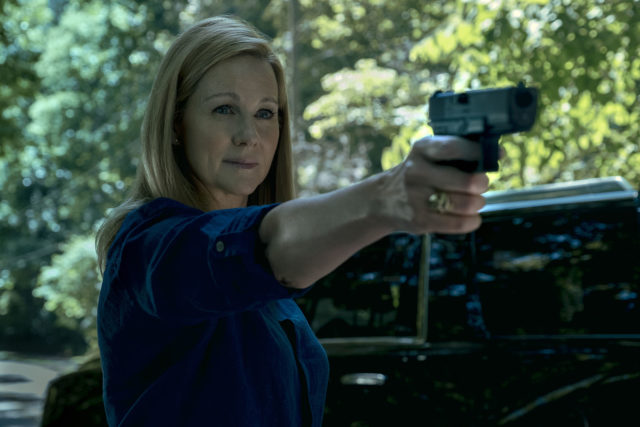Money laundering, marriage problems and local rivalries only scratches the surface of “Ozark.”
The Netflix crime-thriller is nominated for 18 Emmys in 2020, ranging from outstanding contemporary makeup to outstanding drama series, while also being renewed for a fourth and final two-part season. Set in the Lake of the Ozarks region of Missouri, the show follows the Byrde family as they begin a full-fledged laundering operation for the infamous Navarro cartel in Mexico. Former UCLA School of Theater, Film and Television faculty member, Paul Kolsby, has worked as a writer on “Ozark” since season one and later co-producer, and he said one of the most compelling aspects of the series is exploring the balance between crime and family.
“(It’s) a show that (is) funny and scary and dark, and yet has the trappings of a normal family life,” Kolsby said. “Usually in these shows, the kids are unaware of what’s going on, but everybody’s aware and that’s been the fun of telling a family story set in this … criminal world of terror.”
[Related: Q&A: Jackie Cox talks ‘RuPaul’s Drag Race’ representation and activism in entertainment]
Initially, he said the writing team was given the first two episodes already fully written, allowing them to expand upon that foundation. Given the complexity of the storyline which involves a variety of locations and characters across the midwest, Kolsby said maintaining a cohesive plotline requires a highly collaborative environment among the core team of seven writers. But while the tone of the show is established in the writer’s room, the specific look and feel are largely left to the directors.
One such director and camera operator, Ben Semanoff, said “Ozark” operates more closely to a full-length feature than a typical television show, providing the space for new creative opportunities to explore camera shots and cinematography.
Semanoff, who is Emmy-nominated for his directing work on the show, said his goal was to tell the story from a specific character’s perspective while finding intriguing shots for the viewer without drawing attention to the camera. Unlike many television shows, he said “Ozark” is not as concerned with giving every actor close-ups if the shots lend themselves to drawing viewers into the world.
“What we strive for on ‘Ozark’ is to use the camera in a very specific storytelling way to enhance the build of tension,” Semanoff said. “You would think … a camera operator wants to move the camera and shake it around and have fun, (but) for me, my job … (is) executed successfully if you never as a viewer think about the camera and how it’s moving.”
Cherien Dabis, who directed two episodes of “Ozark”‘s third season, said specialized camera shots used within the show have come to define it, enhancing a slow burn within the drama. Specifically, Dabis said the developing shot – where the camera slowly moves from an initial viewpoint to reveal or develop into a more impactful and larger scene – has created a compelling visual style for the show.
Aside from the uncommon camera operation techniques, Dabis also said the series allowed her as a director more control within the “Ozark” world and more freedom to interpret the script compared to traditional television.
“On ‘Ozark,’ the writers actually can’t interfere with your vision as the director, and that’s unheard of in television,” Dabis said. “It was surprising to go into that kind of environment, but also amazingly liberating … and just really fun to be given that level of responsibility.”
[Related: Alum strikes a pose in HBO Max’s ‘Legendary,’ honors ball culture through TV show]
Despite only directing during the third season, Dabis said the precise development of the series and collaborative environment with the other filmmakers allowed her to come onto the show with a clear sense of her role as a director and the world of “Ozark.” And as the show moves toward its series finale, Kolsby said the writers are working to continue increasing the stakes and tension between the Byrde family and the cartel, all the while aligning the current plot with their envisioned ending.
Semanoff said the narrative and visual foundations built in the first two seasons have solidified the success of the third season and future episodes. One of the things that separates “Ozark” as a show is its explicitly defined feel and style – a product of skillful writing, production and collaboration, he said. And with such a high-stakes plotline, Semanoff said keeping the viewers in suspense is what has allowed “Ozark” to thrive.
“People say (‘Ozark’ is) too dark, but for me, it’s great that it’s dark,” Semanoff said. “You can either give everybody all the information or you can give them just enough so that your audience’s brain is active and leaning forward, leaning in, trying to see what’s happening.”

